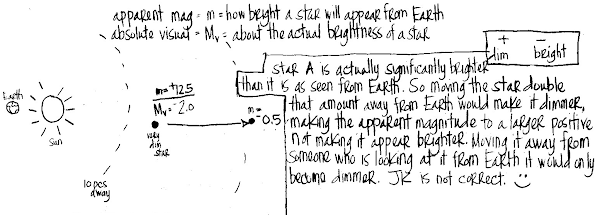Cuesta College, San Luis Obispo, CA
Students have a weekly online reading assignment (hosted by SurveyMonkey.com), where they answer questions based on reading their textbook, material covered in previous lectures, opinion questions, and/or asking (anonymous) questions or making (anonymous) comments. Full credit is given for completing the online reading assignment before next week's lecture, regardless if whether their answers are correct/incorrect. The following question was asked after the last lecture, but prior to the final exam.
Give a piece of advice to yourself at the start of next semester on what you should do (the same, or differently) in order to succeed in Physics 205B (or similar science courses). (Graded for completion.)
"Do the homework!!!!!!!"
"Be prepared. And come to every class."
"1. Stay on top of the homework assignments.
2. Don't procrastinate."
"Physics as all of my classes I'm taking very serious and I do as much as I can to succeed in the courses. Next semester I will approach physics a little bit stronger, meaning, I will do all of the assignments and I will read everything that is assigned. Thank you."
"Continuing to understand equations and concepts on an intuitive level in order to understand varying scenarios."
"Do all the online homework."
"Do the online line homework every time."
"Dear Self,
Please study very hard for the first test. Also, it may be nice if you studied for a few more quizzes, three 18/30 scores wasn't your best performance."Study more and be able to attend the lectures!"
Sincerely,
Yourself from the Past"
"Go to office hours."
"You're better off looking online for explanations of the material instead of in the book."
"Keep up with the homework, go to class, and ask questions if you don't understand something. You got this!"
"Read the online website information well and often!"
"Work less to study more."
"I have done my schedule so that I will not have to miss a reading or homework assignment due to a late lab. I will also not have to hopefully miss class due to work. I am going to do the lab reports the next day and not wait five days."
"start doing homework right at the start of the course."
"Make more time to study and go over everything that I don't understand in the book and spend more time reviewing it. Don't overwork yourself."
"Keep track and monitor my time wisely. Time is the greatest component to studying."
"My piece of advice to myself: don't stress out so much. Enjoy the semester and remember you are learning a lot in the process. Whether it be something like figuring out projectile motion on the moon (pretty fascinating!) or strengthening skills such as time management, each semester has a lot to offer. It is not just about the letter grade."
"Learn that procrastination makes your stress levels go up and try to avoid procrastinating it."
"Come prepared."
"Brush up on material each week outside of class."
"My advice to myself would be to stay on track with the reading assignments, its easy to go off track with other school stuff and harder to understand what is going on during lecture."
"Prioritization of classes, figure out the amount of work each class requires and the grade I want for each class and set my schedule accordingly."
"Keep studying hard, and at least one week before any exam."
"Find more time to study, use better time management skills, and ask more question relating to work done."
"Do similar practice problems on the practice quizzes to better prepare for them."
"Look up similar practice problems for the quizzes/tests to be able to better understand how to do the test problems."
"I would tell myself to not get behind on the reading right away like I did. I feel like ever since then I've been playing catch up. I would also tell myself to be more disciplined when it comes to my homework."
"I need to make sure that I have a much better understanding of the equations that are used in any science class."
"You should take advantage of many available sources such as the textbook and Khan Academy. Also study on a regular basis."
"I should only take one big science class per semester in order to have time to dedicate to studying and learning the material."
"Figure out early the teaching style of the course so as to keep on top of homework/study habits, etc."
"You can actually do it. You're smart enough, and work hard enough for your goals."
"Take it seriously perhaps? Hard to be motivated when you're not interested in the class because you have to take it, and did not choose it."
"Hey you! Do the work, learn the stuff, make it happen! You know what I mean."
"Don't be afraid to ask questions! If you're lost, you might not be the only one!"
"Be 'on top of it' for every topic before every lecture."
"I would tell myself to make have a separate binder for the class. That I should the syllabus close to me, and to go to office hours to talk to the professor and keep progress with them."
"I would keep the attendance and would like to work on problems a bit more."
"Don't try to learn physics on YouTube."
"I would tell myself to remember to do the homework and to show up to more labs. Besides that, I feel I have understood the concepts discussed in this class pretty well."
"I would like to tell myself: 'Relax, you can do it!'"
"Don't neglect homework assignments, work out problems at home, read and understand the topics, and always study for the quizzes."
























